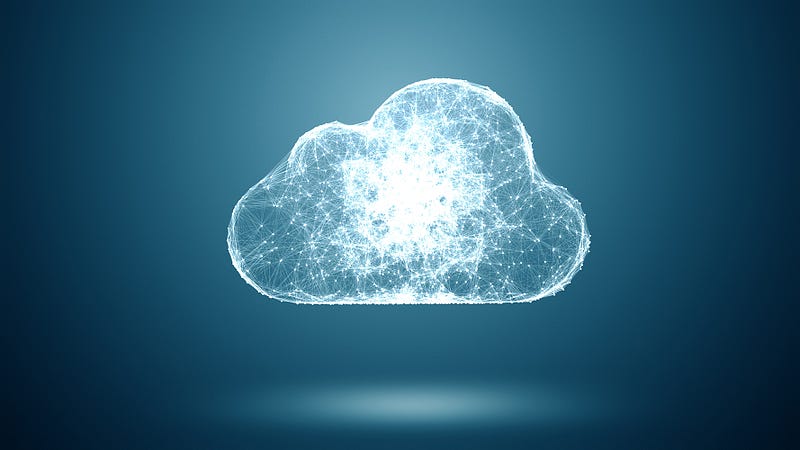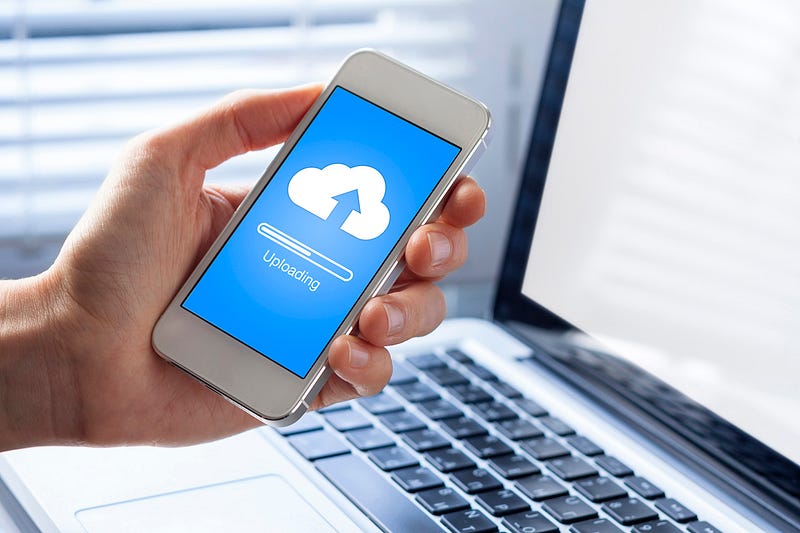
A Brief History of Cloud Computing
Threat Intel’s ‘History of…’ series will look at the origins and evolution of notable developments in cyber security.

What
exactly is cloud computing? This is something that, no doubt, most
people have wondered in recent times, as more and more of the services
we use have migrated to the semi-mythical “cloud”.
One dictionary definition of cloud computing defines it as: “Internet-based computing in which large groups of remote
servers are networked so as to allow sharing of data-processing tasks,
centralized data storage, and online access to computer services or
resources.” Users no longer need vast local services to access storage
or carry out certain tasks, they can do it all “in the cloud”, which
essentially means over the internet.
If we go back to the very beginning, we can trace cloud computing’s origins all the way back to the 1950s,
and the concept of time-sharing. At that time, computers were both huge
and hugely expensive, so not every company could afford to have one. To
tackle this, users would “time-share” a computer. Basically, they would
rent the right to use the computer’s computational power, and share the
cost of running it. In a lot of ways, that remains the basic concept of
cloud computing today.
In
the 1970s, the creation of “virtual machines” took the time-share model
to a new level. This development allowed multiple computing
environments to be housed in one physical environment. This was a key
development that made it possible for the cloud computing we know today
to develop.
Professor
Ramnath Chellappa is often credited with being the person who coined
the term “cloud computing” in its modern context, at a lecture he
delivered in 1997. He defined it then as
a “computing paradigm where the boundaries of computing will be
determined by economic rationale rather than technical limits alone.”
However, some months before this, in 1996, a business plan created by a group of technologists at Compaq
also used the term when discussing the “evolution” of computing. So,
while the source of the expression might be in dispute, it is clear that
the modern “cloud” was something that was being seriously thought about
by those in the IT industry in the mid ’90s — 20 years ago.

Modern developments
In
2006, Amazon launched Amazon Web Services (AWS), which provided
services such as computing and storage in the cloud. Back then, you
could rent computer power or storage from Amazon by the hour. Nowadays,
you can rent more than 70 services,
including analytics, software and mobile services. Its S3 storage
service holds reams of data and services millions of requests every
second. Amazon Web Services is used by more than one million customers
in 190 countries. Massive companies including Netflix and AOL don’t
have their own data centers but exclusively use AWS. Its projected
revenue for 2017 was $18 billion.
While
the other major tech players, such as Microsoft Azure, did subsequently
launch their own cloud offerings to compete with AWS, it dominates the
cloud infrastructure market; according to recent reports,
at the end of 2017 it held a 62 percent market share of the public
cloud business, with Microsoft Azure holding 20 percent, and Google 12
percent. While AWS is still way ahead of its rivals in this space, it is
interesting to note that its market share did drop since the previous
year, while both Microsoft and Google’s market share grew.
While
AWS dominates in the enterprise space, when it comes to consumers, they
are probably most familiar with services like Dropbox, iCloud and
Google Drive, which they use to store back-ups of photos, documents, and
more. The increased use by people of mobile devices with smaller
storage capacities increased the need for cloud-based storage among
consumers. While they may lack understanding about what exactly the
cloud is, it is likely that most consumers are using at least one
cloud-based service. The cloud has allowed for the growth of the mobile
economy, in many ways, allowing for the development of apps that may not
have been possible in the absence of a cloud infrastructure.
In organizations, the numbers using cloud services is even larger. The Symantec ISTR 2017
showed that the average enterprise has 928 cloud apps in use, though
many businesses don’t realize that their employees are actually using so
many cloud services.

Security concerns
However,
while there are many advantages to cloud computing, and many reasons
why companies and individuals use cloud services, it does present some
security concerns. One of the appeals of information stored on the cloud
is that it can be accessed remotely, however, if inadequate security
protocols are in place, this is also one of its weaknesses. There have
been many stories in the news about Amazon S3 buckets being left on the web unsecured
and revealing personal information about people. However, as it seems
unlikely that cloud computing is going anywhere, the answer to these
kinds of issues is more likely to be improving people’s cyber security
practices to ensure they protect data stored online with strong
passwords and other forms of authentication, such as two-factor and
encryption.
The
adoption of cloud was almost inevitable in our hyper-connected world.
The need for computing power and storage simply became too expensive and
too much for many businesses and individuals to tackle, meaning they
needed to farm out these tasks to cloud services. As the move to mobile
continually escalates, and as the Internet of Things (IoT) continues to
grow as a sector, cloud computing is set to continue its growth.
It may have started out as a marketing term, but cloud computing is an important reality in today’s IT world.
Check out the Security Response blog and follow Threat Intel on Twitter to keep up-to-date with the latest happenings in the world of threat intelligence and cybersecurity.
Like
this story? Recommend it by hitting the heart button so others on
Medium see it, and follow Threat Intel on Medium for more great content.

